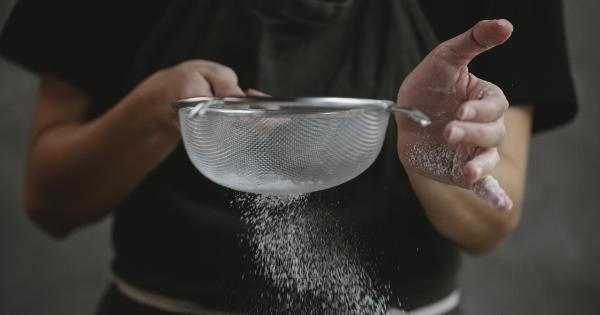Every day, we encounter a wide range of smells that affect our perception of the world around us.
Whether it’s the aroma of freshly baked bread, the scent of blooming flowers, or the pungent odor of body sweat, our olfactory system enables us to experience the multitude of smells in our environment. In this article, we will explore the science behind smell and how it relates to deodorant and body odor.
How Do We Smell?
Before delving into the specifics of deodorant and body odor, it’s essential to understand the basics of how we perceive smells. Our sense of smell arises from a complex process involving various organs and systems in our body.
It all begins with the olfactory system, which comprises the olfactory epithelium and olfactory receptors located in the nasal cavity.
When odor molecules enter our nasal cavity through inhalation, they come into contact with the olfactory epithelium.
This epithelium contains specialized cells known as olfactory receptor neurons (ORNs), which have tiny hair-like structures called cilia. These cilia intercept odor molecules and trigger electrical signals that are transmitted to the olfactory bulb, a structure in the brain responsible for initial processing of smell information.
From the olfactory bulb, the signals travel to the olfactory cortex and other brain regions, where they are interpreted, allowing us to recognize and differentiate various smells.
Interestingly, our olfactory system is directly connected to the limbic system, which influences our emotions and memories. This is why certain scents can evoke strong emotional reactions or trigger vivid memories.
Body Odor: What Causes It?
Body odor is the distinctive scent produced by the human body, particularly in areas such as the armpits, feet, and groin. The primary cause of body odor is the action of bacteria on sweat released by specialized glands.
The human body has two types of sweat glands: eccrine glands and apocrine glands.
Eccrine glands are found all over our body and are responsible for regulating body temperature. They secrete a watery odorless substance that helps cool down our skin when it evaporates.
Apocrine glands, on the other hand, are mainly concentrated in areas with high concentrations of hair follicles, such as the armpits and genital area. These glands produce a thicker, oilier sweat that contains proteins and lipids.
When this sweat interacts with the bacteria present on our skin, particularly in warm and moist areas, it undergoes a process called bacterial fermentation.
The bacteria break down the proteins and lipids in the sweat, releasing volatile compounds that contribute to the distinct body odor. Factors such as genetics, diet, and personal hygiene practices can influence the intensity and type of body odor produced.
Deodorant: The Role of Antiperspirants
Deodorants are products designed to mask or eliminate the odor produced by sweat. They work by targeting the bacteria that cause this odor and often contain a combination of fragrances, antibacterial agents, and antiperspirants.
Antiperspirants play a vital role in reducing body odor by minimizing the amount of sweat that is released onto the skin’s surface.
Most antiperspirants use aluminum-based compounds that temporarily block the sweat glands, preventing perspiration from reaching the skin. As a result, there is less sweat available for the bacteria to ferment and produce odor.
Additionally, many deodorants contain antibacterial agents that directly target the bacteria responsible for the breakdown of sweat.
These agents can eliminate or inhibit the growth of bacteria, reducing their ability to produce the compounds that contribute to body odor. Fragrances in deodorants help mask any remaining odor and provide a fresh scent.
The Science Behind Deodorant Ingredients
Several ingredients commonly found in deodorants play a role in combating body odor. Let’s take a closer look at some of these ingredients and their scientific properties:.
1. Aluminum Compounds:
Aluminum compounds, such as aluminum chloride or aluminum zirconium, are widely used in antiperspirants because of their ability to block sweat ducts temporarily.
These compounds form a gel-like plug that reduces the release of sweat onto the skin’s surface, thereby minimizing bacterial fermentation and body odor.
2. Triclosan:
Triclosan is an antibacterial agent often included in deodorants. It works by disrupting the bacterial cell membranes, ultimately killing or inhibiting their growth.
By reducing the number of bacteria on the skin, triclosan helps prevent the breakdown of sweat and the subsequent production of odor.
3. Fragrances:
Fragrances in deodorants serve a dual purpose. Firstly, they provide an appealing scent that helps mask any existing body odor. Secondly, fragrances can act as antimicrobial agents, inhibiting the growth of odor-causing bacteria.
Some deodorants contain natural extracts or essential oils known for their pleasant smells and antimicrobial properties, such as tea tree oil or lavender oil.
4. Baking Soda:
Baking soda, or sodium bicarbonate, is sometimes used in deodorants due to its ability to neutralize odorous compounds. It works by reacting with the acidic byproducts of bacterial fermentation, neutralizing their pH and reducing their odor.
Baking soda also has antimicrobial properties, adding another layer of protection against odor-causing bacteria.
5. Ethyl Alcohol:
Ethyl alcohol, also known as ethanol, is a common ingredient in deodorants due to its antimicrobial properties. It can effectively kill bacteria by denaturing their proteins and disrupting their cell membranes.
Ethyl alcohol evaporates quickly, leaving a refreshing sensation on the skin and helping to reduce perspiration.
Choosing the Right Deodorant
With numerous deodorant options available in the market, choosing the right one may seem overwhelming. It’s important to consider personal preferences, skin sensitivities, and product efficacy.
Some individuals may prefer a deodorant with natural or organic ingredients, while others may opt for unscented or hypoallergenic options.
People with excessive sweating, a condition called hyperhidrosis, may require clinical strength antiperspirants or even medical treatments to manage their sweat production effectively.
It’s advisable to consult with a healthcare professional for guidance in such cases.
Ultimately, the ideal deodorant is one that effectively combats body odor while suiting an individual’s specific needs and preferences.
Conclusion
The science behind smell, deodorant, and body odor provides valuable insights into how our olfactory system works and the role of various products in managing body odor.
Through an understanding of the underlying mechanisms, we can make informed choices about personal hygiene, deodorant selection, and strategies to mitigate body odor.































